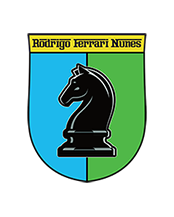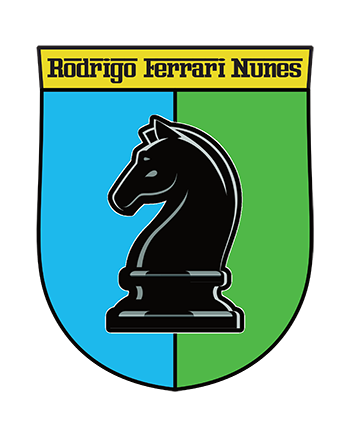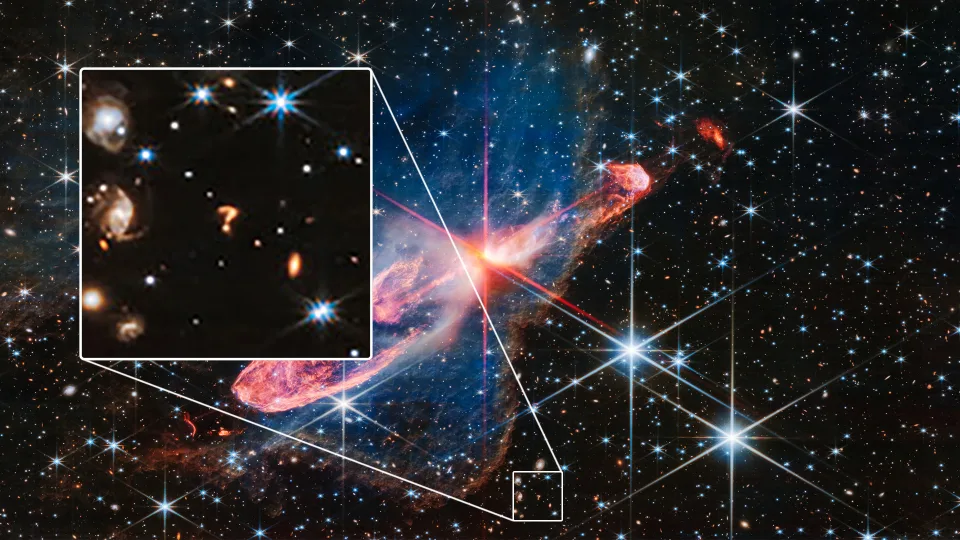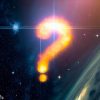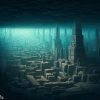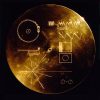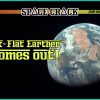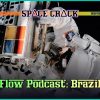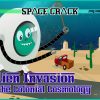In an era marked by cosmic propaganda under the dominion of the colonial cosmology and its lore, a stream of preposterous fictional narratives continues to emerge, masquerading as cosmic mysteries. Unaware of how cosmological images are concocted with various computer techniques, believers are left grappling with substandard interpretations and assumptions that support the colonial fantasy of space exploration.
The James Webb Space Telescope program published an image featuring an alleged celestial entity that magically resembles a question mark. This visual spectacle, accompanied by fervent explications, is paraded as a profound revelation. However, the question mark is simply drawn using an image editor, a fact that is painfully obvious.
Astronomical authorities provide various baseless speculations, making sure they avoid the pivotal issue—the image’s authenticity or lack thereof. This illustrates the complete dependence and lack of critical thinking that often accompanies authoritarian colonial space lore in general. This glaring omission is highly significant. So-called space telescopes images are not direct cosmic captures; rather, they are digital, artistic creations presented as raw cosmic reality.
Such telescopes are also not realistic or feasible. It seems like NASA, having failed to show any stars on the Moon during the Apollo missions, decided to create representations of stars allegedly captured in space to fill the gap and compensate for the omission. After all, people were eager to receive images of stars from the pristine view from space, free from any light pollution and air distortions. At the time of Apollo, no stars were visible from space. Now anything is visible from space, including a cosmic question mark.
Space telescopes make the impossible possible. Most people do not know photography well enough to understand that moving cameras cannot take clear long exposures of anything whatsoever, so they are willing to buy into the fantasy of orbiting space telescopes. The orbiting telescope tale goes back decades now, and it has worked wonders for the colonial cosmology, as it can be repeated again and again, producing the same innocuous presentations, shallow concepts, computer animations, digital art, and diagrams. Most of the colonial cosmology storylines are repeated and recycled with small variations, under the assumption that if they worked to bamboozle one generation, they are bound to work again in the next generation. We may call this the dangling carrot in a stick space crack Donkey approach.
Regarding the so-called cosmic question mark, this is what the alleged experts have to offer.
Matt Caplan, an assistant professor of physics at Illinois State University, asserts that “The very first thing you can rule out is that it’s a star in the Milky Way.” He assumes that the image of the question mark is both authentic and unquestionable. For him, all stars produce the same cut-and-paste looking fake spike flares in the exact same angles, defying all that is known about lenses and flares in actual reality.
Having examined the photoshopped question mark, Christopher Britt, an ‘education and outreach’ scientist at the Space Telescope Science Institute, claims that “It could be a merger of two galaxies that, at probably billions of light-years away, are much farther away than Herbig-Haro 46/47.” He assumes that such galaxies would merge in such a way that they would look exactly like someone used a Photoshop tool to create a glowing question mark on an already visually polluted artwork from the space telescope’s perspective.
The terms ‘education and outreach’ here simply represent a euphemism for public relations and propaganda. The cosmic question mark is a prime example of a fictional storyline curated for mass consumption to promote the colonial cosmology. The idea that someone can glance at it and make a claim that it is billions of light years away and people believe it is fantastic in itself. Examples of anti-scientific thinking presented as science abound in all modern astrophysics discourse.
And it gets better. Professor Caplan provides his magnificent expert insight on the cosmic question mark: “this is very much ‘a local man finds a chicken tender that looks like George Washington.” This whimsical remark serves as a poignant example of how colonial cosmology believers veer away from rigorous analytical scrutiny of the evidence that they must accept.
As noted earlier, the official cosmic question mark discussion neglects any concern regarding the authenticity of the images themselves. These images, as NASA admits, are the products of digital manipulation and artistic enhancements. They have no standing as verifiable records of cosmic occurrences.
In astrophysics, a storytelling branch of computer animation and simulation modeling arts, rigorous scientific thinking takes a backseat to theory and speculation based on unfounded colonial cosmological assumptions. Most of the stories that colonial cosmology paradigm proponents propagate are based on groundless speculations and easily disprovable dogmatic lore. Hence, the comparison with Santa Claus is often hard to resist.
People who believe these unverifiable cosmic tales, still have their perceptions under colonial cosmological control due to various related factors that they have usually not reflected on. Believers are just unaware that the cosmological stories the mainstream media propagates in the name of space agencies and the colonial state are simply fictional. For them, these stories seem so ubiquitous in their mental picture of the universe that they must be true. This is the case of the unwitting believer, which comprises of most of the population.
Believers remain unable to defend the stories they have absorbed as scientific. This happens because they have slowly learned to accept them passively and even enjoy them without an inkling of suspicion for most of their lives. Often, their sense of the future, how they imagine the world changing is tied to these tales. Developing the perception and acuity for understanding this critique is, for them, very challenging. Yet, they are not responsible for the vision they hold, and are therefore not to blame, despite how they may hold on to fictional colonial cosmological beliefs as if their lives depended on them. Social expectations and peer pressure, usually from close friends and family is enough to keep them in check.
We should exercise cosmological tolerance and understanding, avoid emotional confrontations, because the victims cannot be blamed for their programming. In fact, having been constantly bombarded with propaganda and stripped from a critical education, believers are in no position to argue about cosmological matters and are unable to analyze the information with cold rigor and logic. Some believers express an unwavering gullibility regarding cosmic images. They find them actually inspiring, unable as they are to discern art from nature, and, in fact, absorbing art for nature. They also have the right to believe anything they want and to express or not their reasoning. For the same reason, in a relatively free world, we all have the right to exercise our analytical minds and dive into the details surrounding this question, as we have done for years, having once been believers ourselves.
Many factors prevent believers from looking any further and testing the tenets of the colonial cosmology. Until they develop the understanding, curiosity and skills to document, measure, test, describe and discuss the environment, they will even believe that a magical space telescope captured a cosmic question mark. And if someone presented as a scientist claims the question mark is made out of merging galaxies, despite how terrible it actually looks, that should be good enough.
Video Summary
REFERENCES
Rogers, K., & Strickland, A. (2023, August 14). NASA telescope spots cosmic question mark in deep space. CNNWire. https://abc7.com/question-mark-space-telescope-nasa/13642743/
